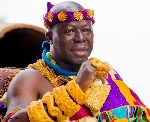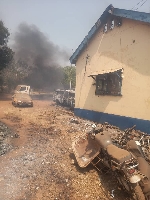WHO: Gov'ts unprepared to combat global COVID-19 surge
 A nurse works at a COVID-19 intensive care unit of a hospital in Saint-Denis, France, on Dec. 29, 2021. The World Health Organization said on Aug. 6, 2024, that many countries are not prepared for a global surge of COVID-19
A nurse works at a COVID-19 intensive care unit of a hospital in Saint-Denis, France, on Dec. 29, 2021. The World Health Organization said on Aug. 6, 2024, that many countries are not prepared for a global surge of COVID-19
The World Health Organization is warning that governments throughout the world are unprepared to combat the global surge of COVID-19, which is putting millions of people at risk of severe disease and death.
“COVID-19 is still very much with us,” Dr. Maria Van Kerkhove, WHO director for epidemic and pandemic preparedness and prevention, told journalists in Geneva Tuesday.
“The virus is circulating in all countries. Data from our sentinel-based surveillance system across 84 countries reports that the percent of positive tests for SARS-CoV-2 has been rising for several weeks,” she said.
Not only is COVID-19 surging in many countries across seasons, she said, but at least 40 Olympic athletes have tested positive in Paris despite efforts by authorities to safeguard the venues against infectious disease circulation.
WHO chief Tedros Adhanom Ghebreyesus declared an end to the COVID-19 pandemic as an international health threat on May 5, 2023. Since then, the U.N. agency has received scant official information from countries regarding the number of new infections and deaths, as well as other essential information.
That has forced health agency officials to scroll through government websites, looking at ministry of health reports to ascertain monthly trends on hospitalizations linked to COVID-19 infections.
“On the hospitalization rates, we have seen increases in the Americas. We have seen increases in Europe. In recent months, we have seen increases in the Western Pacific,” Van Kerkhove said. “Thirty-five countries out of 234 countries and territories are providing this information. … So about 15% of available countries and territories have that information to share with us.”
Based on wastewater surveillance, WHO officials have determined that circulation of SARS-CoV-2, the virus that causes COVID-19, is 2 to 20 times higher than is currently being reported.
“This is significant because the virus continues to evolve and change, which puts us all at risk of a potentially more severe virus that could evade our detection and/or our medical interventions, including vaccinations,” said Van Kerkhove.
Over the last two years, she noted that there has been “an alarming decline in vaccine coverage,” especially among health workers and people over 60, “two of the most at-risk groups.”
“I am concerned,” said Van Kerkhove. “With such low coverage, with such large circulation, if we were to have a variant that was more severe, then the susceptibility of the at-risk populations to develop severe disease is huge. It is huge in every country.”
WHO officials observe that governments and their people have been lulled into a sense of complacency because the impact of COVID-19 is less now than it was during the pandemic. However, they also warn that could change for the worse as the immunity achieved through previous infections, and the protection achieved through vaccination, wears off.
The WHO says countries could and should be doing much more to prevent the current global surge from turning into another full-blown pandemic. The global health agency is urging countries to continue to sharpen their pandemic preparedness, readiness and response systems “to be ready for surges of COVID-19 as well as other emerging and reemerging pathogens,” such as avian influenza H5N1, mpox and dengue.
The WHO recommends that people in the highest risk groups receive a COVID-19 vaccine within 12 months of their last dose. To increase uptake and protection, it recommends people get their COVID-19 shot in tandem with their seasonal flu shot.
“Vaccination with any of the approved vaccines will protect against severe disease and death,” said Van Kerkhove. “It will lower your risk of developing severe disease. It will also lower your risk of developing post-COVID condition,” otherwise known as long COVID.
Source: voanews.com/Lisa Schlein
Trending News

President Mahama visits conflict-ravaged Bawku
10:47
Asantehene advocates social contract over political dependence for development
10:13
New MMDCEs to be ready in two weeks time-Ashie Moore
09:17
NDC announces vetting schedule for MMDCE applicants in Central Region
10:34
Ejura erupts in chaos following death of suspect in Police custody
21:50
Akufo Addo’s 2016 WASSCE results figures inaccurate-Dubawa
08:36
ORAL is Ghana's corruption CCTV - Ablakwa reveals
10:14
President Mahama streamlines gov't, sticks to 23 ministries
21:06
Four Independent MPs align with Majority Caucus in Parliament
03:08
Scrap e-levy, betting taxes, but don't introduce new taxes through the back door - Gideon Boako to Ato Forson
09:38



